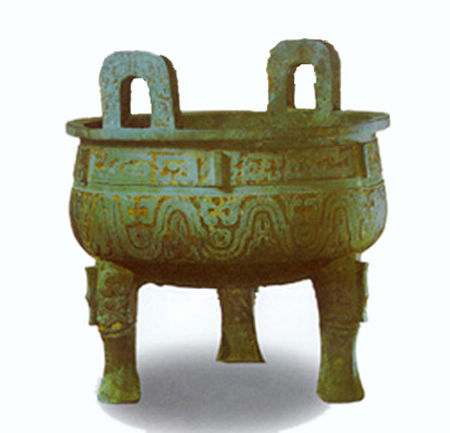Categories of Chinese bronze vessels—sacrificial vessels
The Chinese Bronze Age began in the Xia Dynasty (C.2070-C.1600 BC), and bronze ritual containers form the bulk of the collection of Chinese antiques, reaching its zenith during the Zhou Dynasty (1046-256 BC).
The appreciation, creation and collection of Chinese bronzes as pieces of art and not as ritual items began in the Song Dynasty (960-1279) and reached its zenith in the Qing Dynasty (1644-1911) in the reign of the Qianlong emperor, whose massive collection is recorded in the catalogues known as the Xiqing gujian (西清古鉴) and the Xiqing jijian (西清继鑑). Within those two catalogues, the bronze vessels are categorized according to use:
Sacrificial vessels (祭器)
Dǐng (鼎), was originally a cauldron for cooking and storing meat (食器). The Shang prototype has a round bowl, wider than it is tall, set on three legs (足); there are two short handles on each side (耳). Later examples became larger and larger and were considered a measure of power. It is considered the single most important class of Chinese bronzeware in terms of its cultural importance.
 0
0 








Go to Forum >>0 Comments